2021 BMW M3 Evokes Futuristic Nostalgia
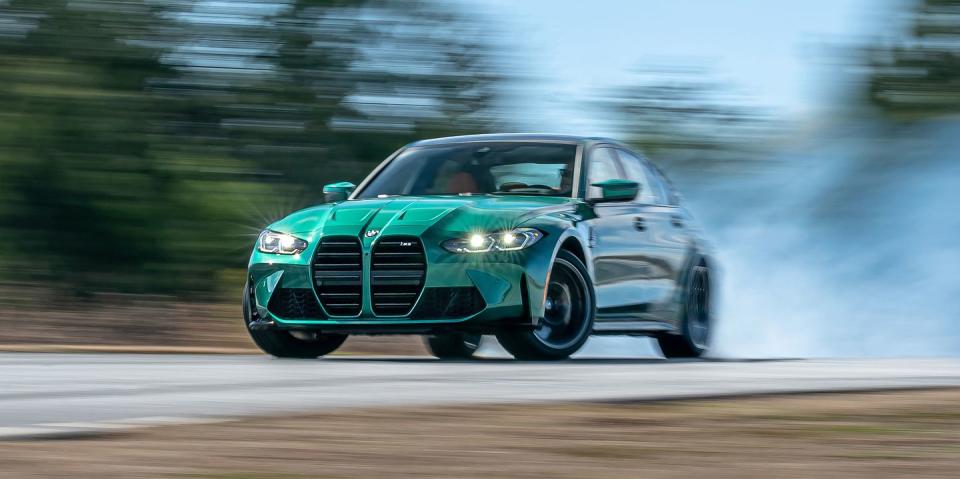
BMW might want to reconfigure the wireless phone charger in the 2021 M3. It has a clasp that holds the phone against the side of the console, and squeezing my iPhone down in there depressed the volume and power buttons simultaneously while I was out on the wet skidpad at the BMW Performance Center in Greer, South Carolina. Which wouldn't be a big deal, except that pushing down those buttons eventually causes an iPhone to dial 911. What's my emergency? Uh, I can't get the M3's M Drift Analyzer to give me five stars, but I'm not sure that qualifies as an emergency.
Neither does the new grille, which isn't great, but looks better on the M3 than the base 4-series primarily because it's blacked out rather than glitzed up in silver. You know how some artists include a deliberate flaw in their work to remind themselves that only God is perfect? Maybe BMW went that route, too. If you really can't stand the grille and yet must have an M3, there's an easy fix: Skip the good colors—Isle of Man Green, Toronto Red, Frozen Portimao Blue—and buy it in black.
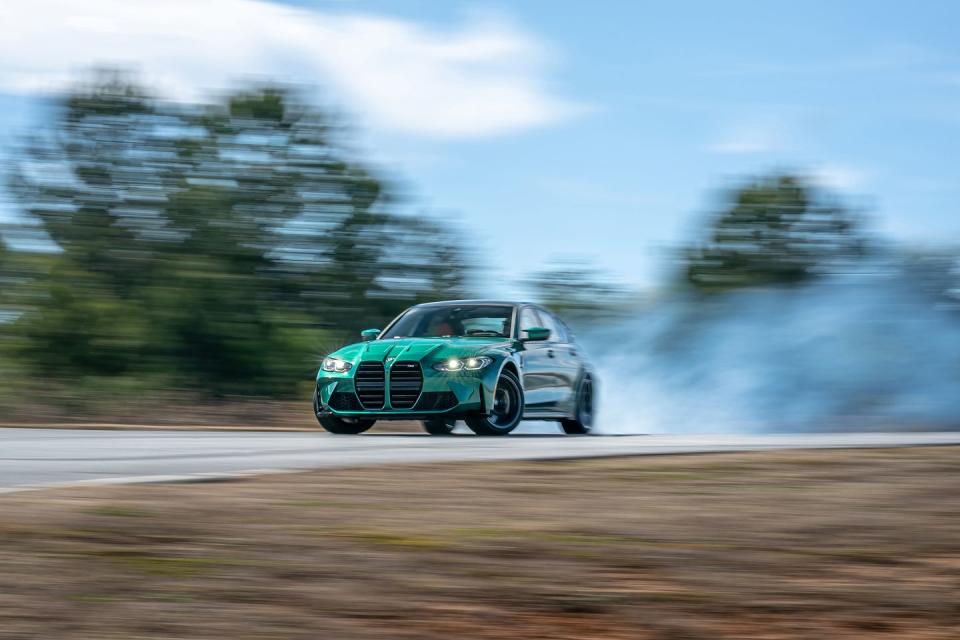
The good news is, when you're behind the wheel, you forget all about the XXL twin-kidney action up front. That's because there's an all-time-great inline-six snuggled up against the firewall: BMW's S58 engine is a twin-turbocharged 3.0-liter that makes 473 horsepower and 406 pound-feet of torque in the core M3 model and 503 horsepower and 479 pound-feet in the M3 Competition. But the latter is available only with an eight-speed slushbox, and it's a regular planetary-gear automatic; gone is the dual-clutch from the options sheet. We'd gladly surrender 30 horses and pick the base car, as it comes exclusively with a six-speed manual transmission. For the 2022 model, due later this year, the Competition will be available with all-wheel drive. And just as in the M5, it will include a rear-drive mode to enable smoky, sideways drift shenanigans.
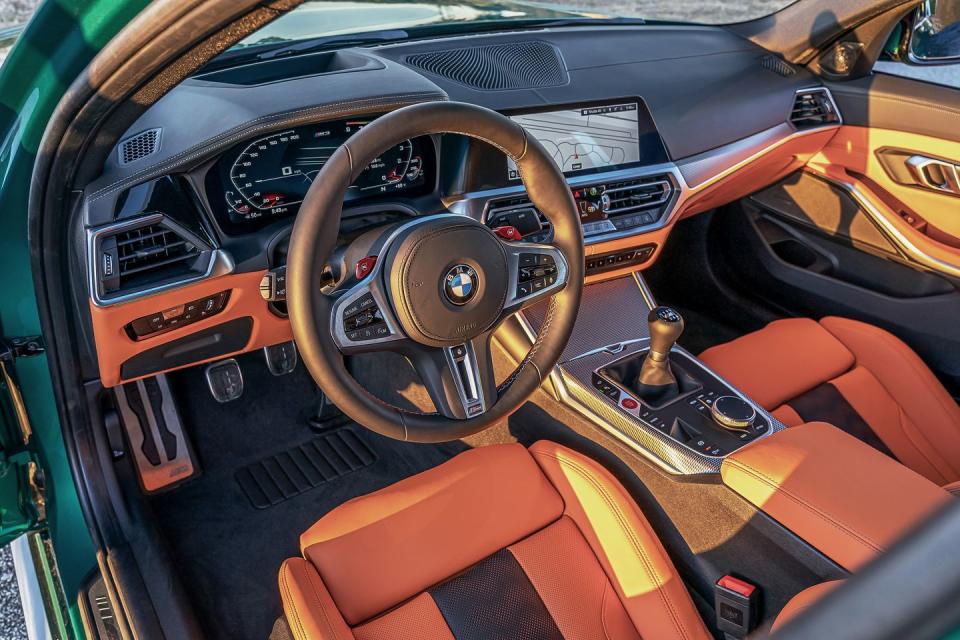
The manual M3 requires no special mode for lurid tail-out antics. In fact, if you spec the M Drive Professional package, it even encourages that brand of behavior with the onboard M Drift Analyzer. The computer tallies the length of your drift (both time and distance) and the wheel angle to assign a score on a five-star scale. Considering what you have to do to earn five stars, this feature may as well be called the S58 Donor Car Generator. Fortunately, the optional carbon-ceramic brakes are so strong that the pulses of the ABS lay down a Morse code of Michelin in the braking zones. Beware: Hard stops heading east might spin the earth a little faster and thereby shorten your track day.
With this much grip at your disposal, breaking the M3's tires loose on dry pavement requires deliberate foolishness. There's usually no reason to disable the stability control, given that with the M Drive Professional pack it has 10 settings, the most permissive of which is like a bungee jump that brings your nose three inches from the floor of the ravine. On the base car, the six-speed offers rev matching for downshifts, if you like, and its throws are classic BMW. The north-south shifts are relatively short, but the 2-3 requires a shuttle-bus transfer to the next gate. It's still great fun, and you should get it.
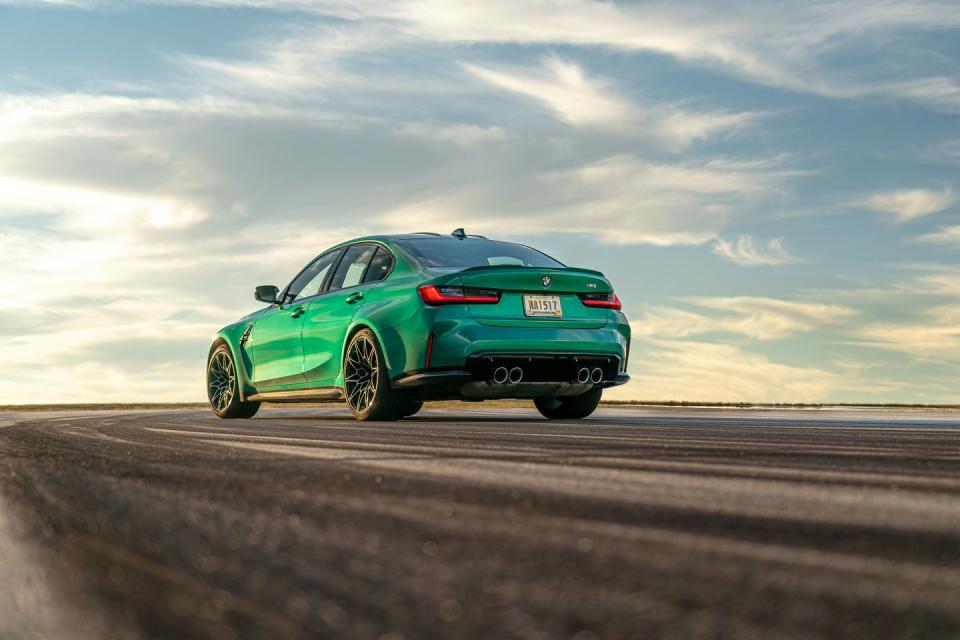
You'd think that an engine making 158.0 horsepower per liter (or 168.1 in the M3 Competition) would have the power delivery of a hand grenade, but the S58 is smooth and flexible, happily crushing your shoulders into the seat at nearly any rpm. In the core model, peak torque hits at 2650 rpm and doesn't tail off until 6130 rpm, which translates as ferocious acceleration basically anytime you want it. We expect the M3 Comp to hit 60 mph in 3.6 seconds and the base car to get that job done in about four.
Dimensional inflation being what it is, the new M3 is bigger than the last, especially in length, where it gains 4.6 inches. If you're trying to envision what it looks like sizewise, the 2021 M3 is slightly longer and wider than a 21-year-old E39 M5. It still feels compact, affirming that this is the perfect size for a sports sedan, whether badged as a 3- or 5-series. Perhaps G80—the BMW model code for this generation of the M3—will someday carry the same cachet as E39. Or maybe it'll just confuse Genesis owners.
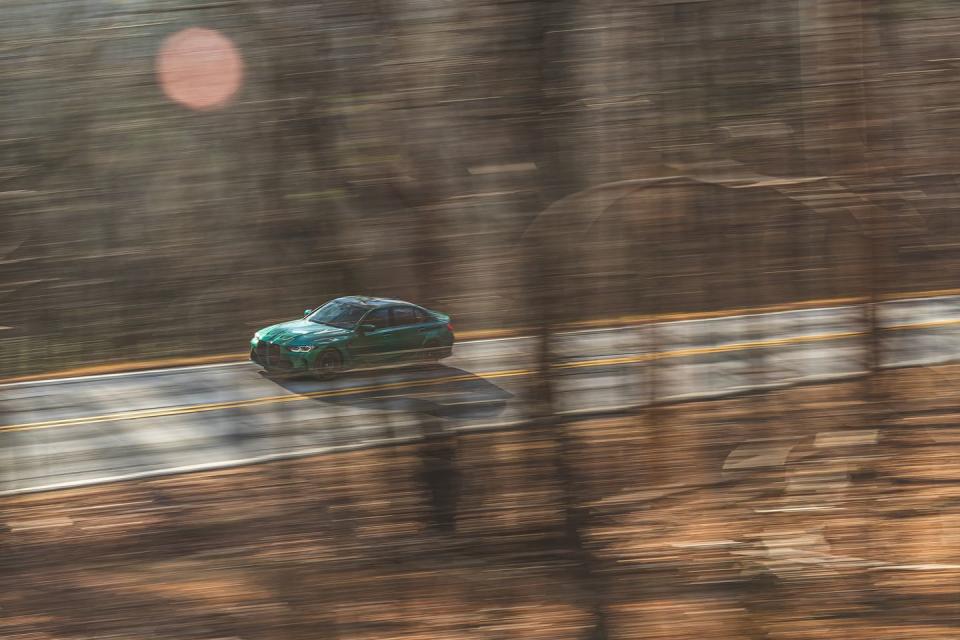
Starting at $70,895, the M3 is not cheap, but nonetheless represents good value for a car that can handle family-hauler chores Monday through Friday and hound Ferraris at track days on the weekend.
As for that front end, perhaps this will be like Audi's Singleframe grille, where we get used to it—or like the Acura beak grille, where we don't. Either way, let us rejoice that there's a new manual-transmission BMW M3. Because there probably won't be many more times we get to say that.
2021 BMW M3 Competition
You get the idea that the M3 Competition's extra 30 horsepower—for a total of 503—is the consolation prize that comes with its standard eight-speed automatic transmission. That way, you can say you had to get the automatic because you wanted more power, not because you're too lazy to deal with a clutch pedal. You might also say that you needed all-wheel drive, which will be only available on the $2900 more expensive Competition model, starting in summer of 2021. In fact, the new all-wheel-drive setup—which essentially is the same as that found in the Competition versions of the X3 M and X4 M SUVs—is the reason BMW gives for the M3 abandoning its previous dual-clutch transmission for a conventional torque-converter automatic. And the ZF eight-speed is pretty slick in its own right. It doesn't pull off rev-matched downshifts quite as well as the old dual-clutch 'box, but it's close.
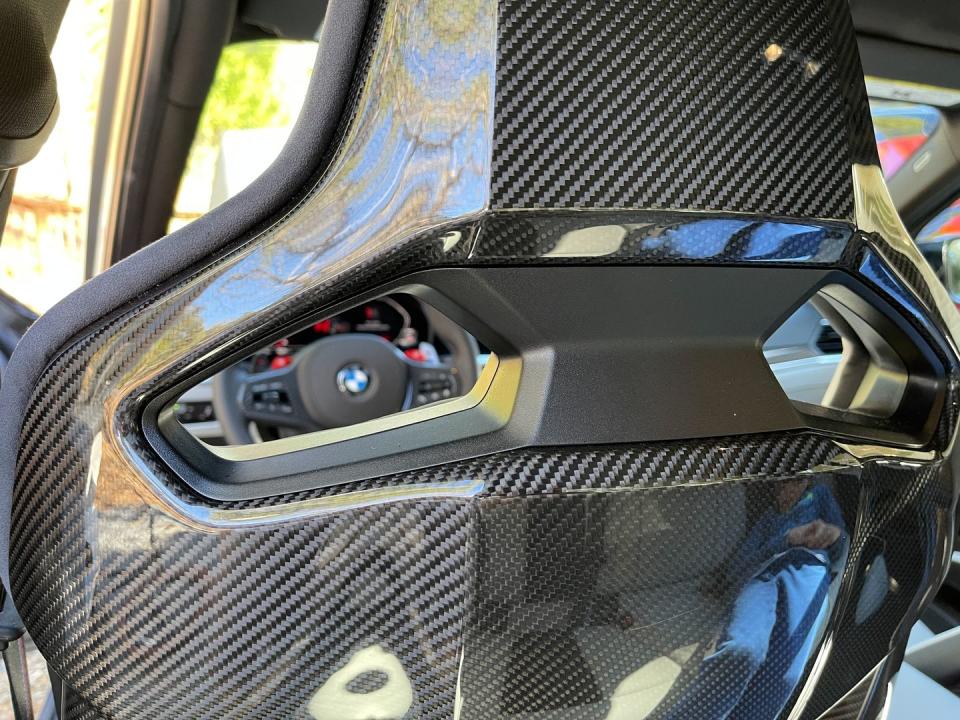
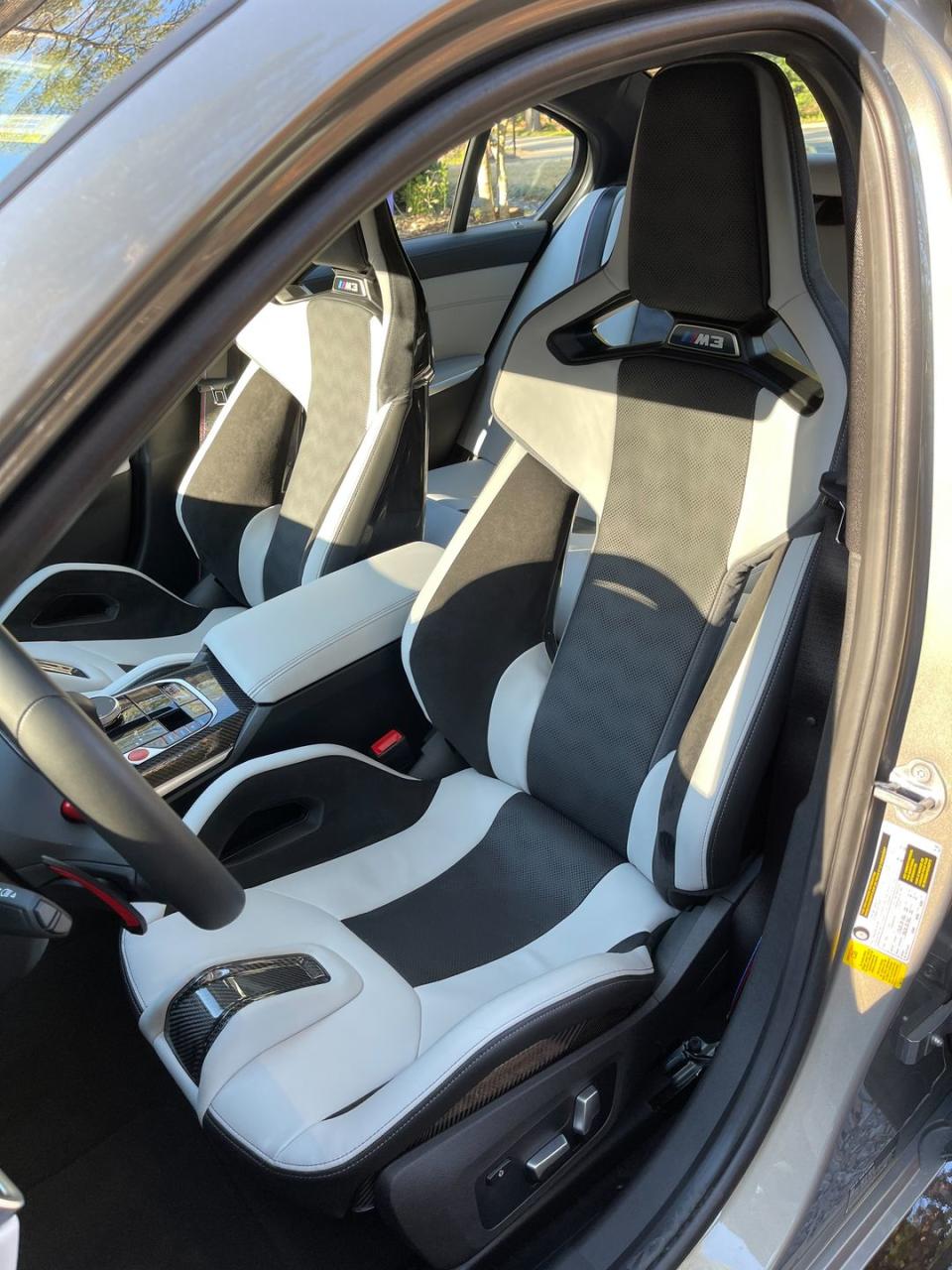
If owners of the manual-transmission M3 aspire to Competition-level power output, it sounds like that upgrade would entail nothing more than software. When we asked BMW about the difference between the two engines, the answer was boost: The standard M3 runs a max of 18.9 psi compared to 24.7 psi in the Competition.
Other than the transmission, the most noticeable difference between the two M3s that we drove was that the Competition had the optional $3800 M Carbon bucket seats, although these seats are available on the base M3 for that price, too. These ultra-supportive thrones include power-adjustable side bolsters, but they're still narrow, skeletal things, like sitting on Timothée Chalamet's lap. There are cutouts in each side bolster and four more huge holes in the seat back, leading one to believe that these seats are much lighter than the standard ones—21 pounds lighter, in fact. And somehow, they're comfortable. They might not be our first choice for a cross-country drive, but they work well around town and their additional side support is welcome in a car that corners as hard as the M3. —ED
You Might Also Like

 Yahoo Autos
Yahoo Autos 